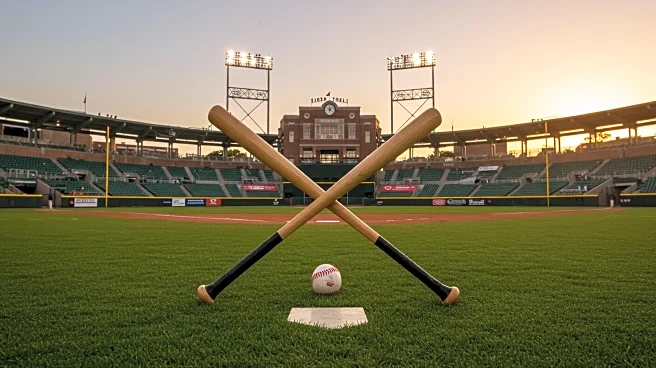What's Happening?
Major League Baseball (MLB) has reported a significant increase in attendance for the weekend of August 8-10, 2025, marking the highest turnout for an August weekend since 2015. Nearly 1.6 million fans attended games across various stadiums in the United States. This surge in attendance coincides with the intensifying pennant races, as teams vie for playoff positions. Notable players such as Aaron Judge, Cal Raleigh, Shohei Ohtani, and Kyle Schwarber are drawing crowds with their impressive performances. Raleigh currently leads MLB with 45 home runs, while Ohtani and Schwarber are close behind with 42 each. Judge is also in contention for the top batting average, hitting .336. The competitive nature of the league, with close races in both the National League and American League, is contributing to the increased fan interest.
Why It's Important?
The rise in attendance is a positive indicator for MLB, suggesting a resurgence in fan engagement and interest in the sport. This is particularly significant as the league approaches potential labor negotiations, with a lock-out looming in 2027. High attendance figures can bolster the league's position in these discussions, demonstrating strong fan support and financial viability. Additionally, the increased turnout benefits local economies, as fans contribute to revenue through ticket sales, concessions, and merchandise. The presence of star players and competitive teams further enhances the league's appeal, potentially attracting new fans and retaining existing ones.
What's Next?
As the MLB season progresses into its final six weeks, attendance is expected to remain high, especially with ongoing divisional races and the approach of the playoffs. Teams in major markets, such as the Chicago Cubs, are in the playoff race, which could further boost attendance figures. The league will likely continue to capitalize on this momentum, promoting key matchups and star players to maintain fan interest. Additionally, MLB may use this positive trend to strengthen its position in upcoming labor negotiations, emphasizing the sport's popularity and economic impact.

